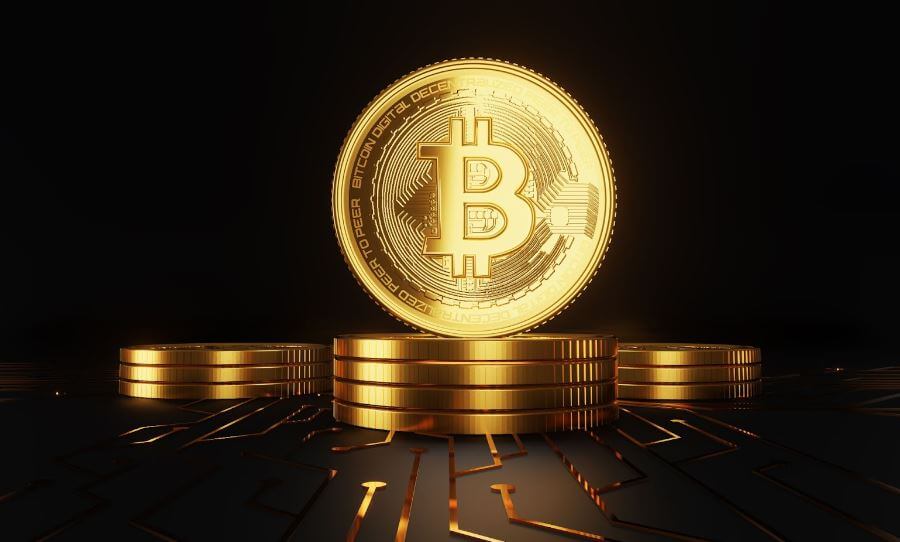
Published as an open-source program in 2009, Bitcoin is constantly credited as the world’s foremost cryptocurrency and can be stylishly defined as an electronic capitalist that just exists electronically.
It’s decentralized, meaning it does not retain a central issuing authority or governmental association that controls the volume of bitcoin in gyration. Still, the Bitcoin system is far from lawlessness. The procedure is coordinated and straightforward. Bitcoin holders can move bitcoins by means of a network. This census records each trade.
Each blockchain “block” is made up by a data structure based on repeated Merkle Trees. This is quite useful for detecting fraud or lines that have been corrupted. If a train in a series is loose or deceptive, the blockchain records it. Rather than relying on a government to issue new bitcoins, Bitcoin’s blockchain software controls when and how many bitcoins are issued. It also maintains track of where bitcoins guarantee that the transactions are legitimate.
Public and private “keys,” which are long strings of numbers and letters connected together by the fine encryption method used to create them, are used to keep bitcoin memorial balances.
The public key (which functions similarly to a bank account number) is the address that is made public and to which others can send bitcoin. The private key (which functions similarly to an ATM leg) is designed to be kept secret and is only used to authorise Bitcoin transactions.
Bitcoin keys should not be confused with a bitcoin carryall, which is a physical or digital gadget that allows stoners to track the power of money and simplifies bitcoin trade. The word “carryall” is a little deceptive, because bitcoin’s decentralised nature means it’s not kept in a carryall, but rather on a blockchain.
Bitcoin Mining
It is the process of releasing bitcoin into gyration. In general, mining entails solving computationally difficult puzzles in order to discover a new block, which is then added to the blockchain.
- Bitcoin crypto mining is the process of adding and verifying trade records across the Bitcoin network. Every block, the price of bitcoin is half and given to miners. In 2009, the block price was 50 new bitcoins. The third halving took place on May 11th, 2020, lowering the price of each block discovery to 6.25 bitcoins.
- A variety of attacks can be used to mine bitcoin. Still, some yield more advanced prices than others. Certain computer chips, called Operation-Specific Integrated Circuits (ASIC), and more advanced processing units, like Graphic Processing Units (GPUs), can achieve higher prices. These elaborate mining processors are known as “mining carriages”.
Still, and if the sharing miners accept the change, Bitcoin could eventually be made divisible to further decimal places if necessary.
Peer-to-Peer Technology
Bitcoin is one of the first digital currencies to use peer-to-peer technology to make instant payments. The independent individuals and companies who enjoy the governing calculating power and share in the bitcoin network — bitcoin “miners” — are in charge of recovering the deals on the blockchain and are motivated by prices (the release of new bitcoin) and trade freight paid in bitcoin.
- These miners can be allowed as the decentralised authority administering the credibility of the bitcoin network. New bitcoin is released to the miners at a fixed, but periodically declining rate. There are only 21 million bitcoins that can be booby-trapped in total. As of June 2021, there are over 18 million bitcoins in actuality and less than 3 million bitcoins left to be booby-trapped. In this way, bitcoin and other cryptocurrencies operate differently from edict currency. In centralized banking systems, the currency is released at a rate matching the growth in goods, this system is intended to maintain price stability.
- A decentralised system, like bitcoin, sets the release rate ahead of time and according to an algorithm. Request Trouble Like with any investment, Bitcoin’s values can change. Indeed, the value of the currency has seen wild swings in price over its short history.
- Because it is subject to a high volume of buying and selling on exchanges, it has a high perception of any newsworthy events. According to the CFPB, the price of bitcoins fell by 61 in a single day in 2013, while the one-day price drop record in 2014 was as big as 80.16. Still, these digital units may lose value and could come empty. If more people begin to accept bitcoin as a currency, Indeed, there was an enterprise that the “bitcoin bubble” had burst when the price declined from its all-time high during the cryptocurrency rush in late 2017 and early 2018.
Although Bitcoin has a huge lead over the hundreds of other digital currencies that have sprung up because of its brand recognition and adventure capitalist, a technological advance in the form of a better virtual coin is always a troublesome addition. If you want to gain more knowledge you can learn from Tutorials Freak it is a free platform for providing tutorials on multiple technologies including bitcoin tutorial for beginners.
RELATED POSTS
View all



